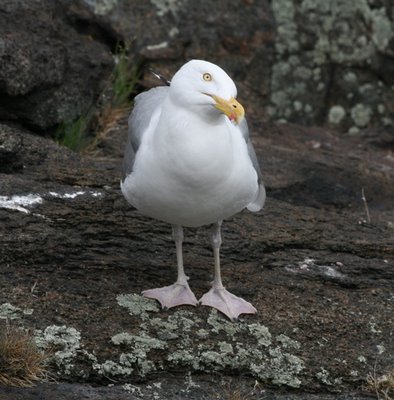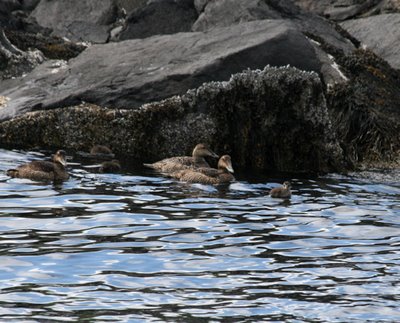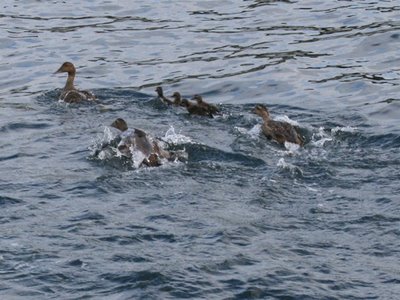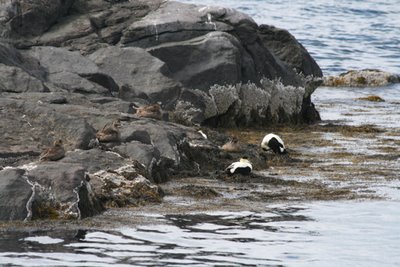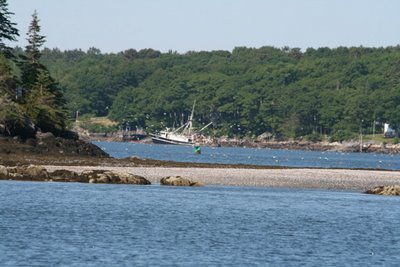Lost in a Gull
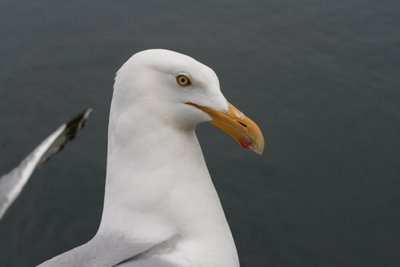
I’ve blackened the gull’s name and reputation in previous posts. It feels odd to be passing judgment on birds I admire so much. Gulls can’t be blamed for taking easy prey, and exploiting spilled bait and incidental catch of the lobster boats. They are supreme opportunists, long lived and crafty. But what kind of predator virtually eliminates its prey base, takes almost every hatchling? What is going on here between gulls and eiders? And what will we do about it, if anything?
On Monhegan Island, we hiked across from the ferry dock to the cliffs on the lee side of the island, some eight miles out from the mainland. Vicious currents make this a deadly spot for anyone who enters the water. No one who has gone overboard on the lee side of Monhegan has ever been saved, according to the tourist brochure that spells out a detailed code of conduct for this tiny but heavily used island. All right. We wouldn't so much as stick a toe in the surf.
This gull noticed that we had food with us, sandwiches and other prime gull fare. She pressed close, close enough for me to notice the sloping brow that characterizes a female herring gull. (The male’s is much steeper. The same difference applies to male and female common loons). She appraised us with icy yellow eyes, looking for her chance, perhaps beseeching. We tossed her a bit of pizza crust now and then, and I got lost in the intelligence in her cool lemon eyes.
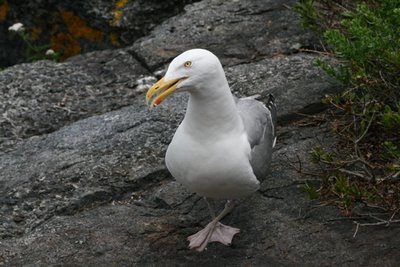 This creature might live 30 or more years. She knows a lot. She knows I am going to cave in and give her some pizza now, and maybe a little bit of my Italian panini sandwich. Oh, yes, she knows.
This creature might live 30 or more years. She knows a lot. She knows I am going to cave in and give her some pizza now, and maybe a little bit of my Italian panini sandwich. Oh, yes, she knows.When she felt conflicted or ill at ease, she'd stare at her feet, the way a raptor does.
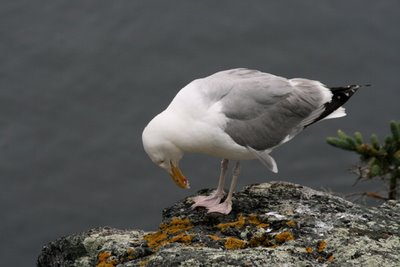 I found that interesting--that behavior crosses taxa. And found myself wondering how many other birds foot-stare when they don't know what else to do. Herons? Storks? Rails? Ostriches? I'd love to know. I like the old-lady pink of her feet, the out-turned toenail on the outer toe.
I found that interesting--that behavior crosses taxa. And found myself wondering how many other birds foot-stare when they don't know what else to do. Herons? Storks? Rails? Ostriches? I'd love to know. I like the old-lady pink of her feet, the out-turned toenail on the outer toe.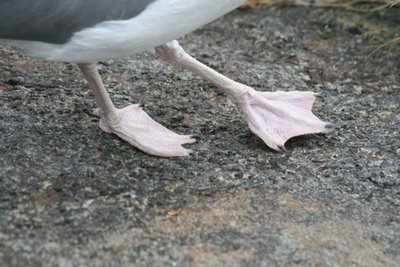
Lost in the curve of her wings, and the ease with which she lifted off over the roiling ocean. How I wanted to fly with her. My bones felt like lead, rooted to the rock and lichens.
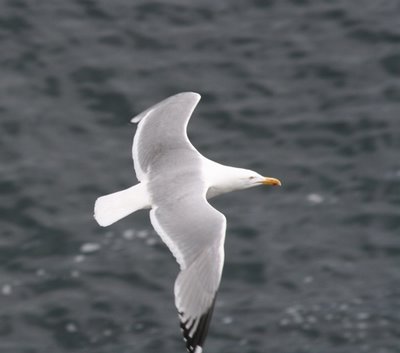 She preened calmly as the surf boiled hundreds of feet below. Overcast, pewter surf--could there be a more perfect photographic salon for a silver and white bird?
She preened calmly as the surf boiled hundreds of feet below. Overcast, pewter surf--could there be a more perfect photographic salon for a silver and white bird?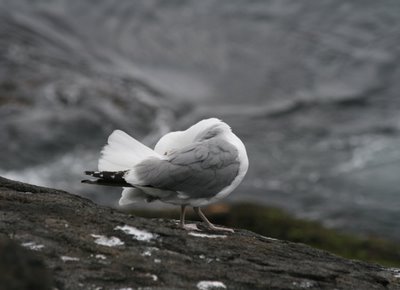 She took grass to her nest on the cliff face. A shape-shifter, she is. How does she do that with her primaries?
She took grass to her nest on the cliff face. A shape-shifter, she is. How does she do that with her primaries?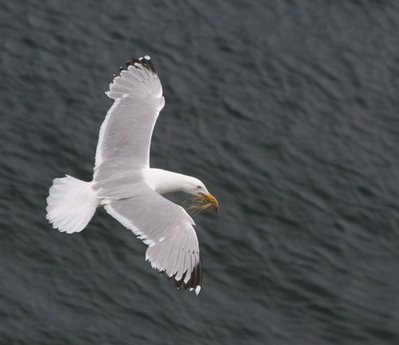 She was perfect, immaculate, mistress of the updrafts, bent on survival.
She was perfect, immaculate, mistress of the updrafts, bent on survival.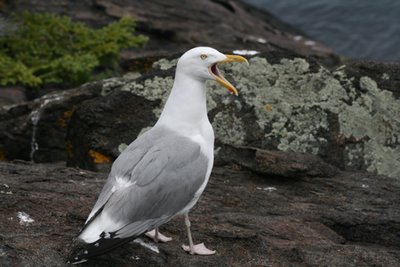
Who can blame her for taking what is offered her, be it bread or duckling? She is no different from me. I don't hate gulls. I wish they didn't eat eiders, that's all. And I feel immeasurably blessed to have spent a few hours in her company, and to be able to share her beauty with you.
Labels: gull predation on eiders, herring gull, Monhegan Island

